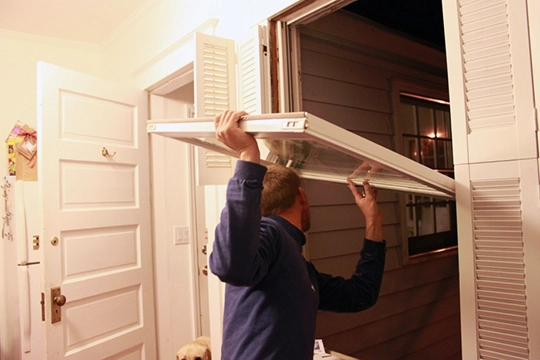Tax preparation outsourcing allows companies to save money as they can concentrate on tasks that generate revenue, and stay current with the most recent rules and regulations. It also lowers the chance of stress and risk that comes with bringing on more employees internally.
Outsourcing companies offer various services, ranging from analyses of data to the creation of strategic worksheets. Even specific tasks like retirement planning could be worked upon by outsourcing companies.
Tax planning for businesses
Small-scale businesses collectively exhale when tax season comes to an end. As businesses expand and acquire new customers, their workloads can rise. The result is burnout, which makes it difficult to keep staff.
Tax preparation outsourcing is an affordable option for businesses who are seeking to break free from the cycle of navigating internal labor regulations and complex tax processes. An experienced partner will help you save both time and cash, regardless of whether you’re preparing your own tax return or that of your clients. This lets your team focus on expanding your business while also providing top customer service.
Tax planning solutions are current with the latest modifications to taxes and tax regulations. They can assist by implementing a tax strategy for companies to minimize their tax liabilities and maximize deductions while staying within the legal limits. Tax planning for business does not just reduce tax burdens but also increases profits for businesses by optimizing of operations and investment strategies.
Examine the costs and services offered by the providers before deciding on one. Certain providers charge hourly rates as well as project-based fees. Others may charge the combination of retainers, AUM, and one-time fees. Take note of the security measures implemented to protect sensitive information. People with no experience might not be aware of the complexity of the financial industry which can lead to costly errors.
Outsourcing can bring many benefits
Small-scale businesses could benefit from outsourcing their tax preparation. It can help you avoid costly expenses while maintaining the highest quality. Outsourcing partners who have the latest technology can streamline processes and increase efficiency. The top outsourcing partners have clear communication and offer regular updates on the progress.

Experts with years of experience can decrease the chance of errors in your tax returns that could result in audits and penalties. They will also help you save time and money by reducing the filing process, and eliminating the need for manual input of data. Your team’s internal staff can concentrate on tasks that are strategic and customer support services.
Outsourcing companies are usually specialized in particular tax areas, like corporate tax estate tax planning, and international tax. They are able to handle the complexity of these tax filings and ensure that you are in compliance with IRS regulations. They can also assist you optimize your tax structure, and help you identify savings potential to be made for tax season 2020. Tax Season 2020.
Outsourcing can help your team stay healthy during times of stress, boosting the morale and performance of your team. It also helps save the company money because it doesn’t have to recruit more employees. A higher productivity and less stress can boost the satisfaction of employees and boost the image of your company. This will allow you to keep your deadlines on track without breaking the bank.
Financial planning outsourcing
Outsourcing financial planning can help companies to simplify their finance and accounting processes, cut expenses and boost the growth of their business. By identifying risk areas, coordinating business plans with the overall strategy, and then assessing the consequences of these risks, it gives companies structure, clarity, and direction. This is a great option for companies that are growing rapidly which don’t have the internal experience or knowledge to manage compliance. Before you make a decision it is important to consider the potential negatives of outsourcing.
Financial planning requires a thorough analysis of the client’s information. It is a time-consuming process and is susceptible to mistakes. It is recommended to employ a team of professionals to do this task and who can provide a high degree of expertise and utilize the latest technologies. Outsourcing companies are also capable of helping with tax filings as well as other compliance concerns. They can offer a affordable, high-quality service that will help advisors save time and money.
Outsourced financial planners offer their services on a contract basis. They are highly skilled and credentialed experts. They typically are certified financial planners or chartered financial analysts, or certified public accountants. Clients can avail complete planning services including investing strategies, risk management, as well as tax planning. Additionally, they are able to manage administrative tasks, such as managing portfolios of investments or writing reports for their clients. Advisors are then able to focus on the services that will add value like the planning of taxes and allocation of assets for the coming years.
Strategies for tax planning
Strategic tax planning permits businesses and individuals to legally lower their tax burden. This is done by finding tax savings opportunities like credits or deductions. This can lower taxable income as well as increase refunds on taxes. This also helps improve the management of cash flow. This can also aid in maximizing the investment of your company and also make sure that you are in compliance with tax laws.
A CPA professional can help you reduce tax burdens by studying the structure of your company as well as your income streams and expenses. A CPA can provide advice about how you can structure your new business or investments to make the most of the tax benefits and regulations. You can invest more into the development of your business by releasing cash.
The tax system offers a range of reliefs and allowances for small-sized companies. The Annual Investment Allowance (AIA) and bonus depreciation are just two examples. These tax breaks can lower the tax burden significantly when you make the most of. Tax planning is the process of identifying ways to save money, which are in line with the business objectives and the activities of your business, such as sustainable initiatives.
A tax strategy that is strategic is an essential element of any company’s financial plan. It is essential to make sure that you pay as low a tax as you can while also protecting both your personal assets and those of the company. This can help you comply with the tax laws in force to avoid interest and penalties and make sure that your assets are secure. A qualified tax professional can give you a comprehensive overview of every aspect of your financial situation including estate planning and strategies for transferring wealth.







